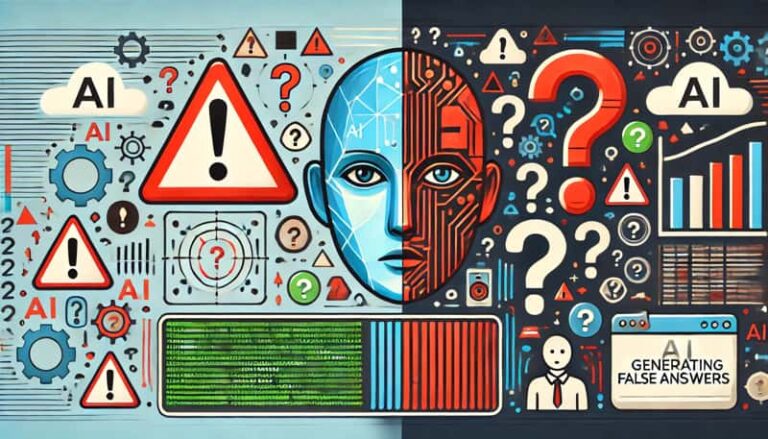
Artificial Intelligence is often criticized for generating inaccurate or misleading information, but this is not always the result of intentional "lying." In fact, it is an inherent limitation of its operation, which is based on pattern seeking and replication of behavior. They are designed to process data and provide answers, even when no real patterns exist. This behavior is rooted in their nature to find answers, whereas humans are predisposed to ask questions. But who is really learning from the other? As we look to artificial intelligence for mathematical certainty, she learns from us the art of doubt.
Generative AIs, such as ChatGPT and Google Bard, are built on massive amounts of data, often collected from the Internet and proprietary sources. These technologies generate responses based on recognized patterns in the data, but can also create false information, known as "hallucinations". This happens when AI generates answers that are not supported by the actual data but seem plausible.
"AI can generate its own false information, called a hallucination," said Javin West, associate professor at the University of Washington Information School.
While humans seek mathematical certainty in AI's answers, these technologies learn from us the art of doubt. Humans are naturally predisposed to ask questions and question information, while AIs are programmed to provide answers based on available data. This role exchange raises a fundamental question: who is really learning from the other?
The Art of Doubt and Mathematical Certainty.
AIs cannot say "I don't know" because they are designed to process data and replicate behaviors. However, it is precisely this limitation that makes us think about the importance of doubt and verification of information. While we seek mathematical certainty in AI responses, we must also learn to manage doubt and critically evaluate information.
The relationship between humans and Artificial Intelligence is a mutual reflection. As they learn from us the art of doubt, we learn from them to look for patterns and answers more efficiently. But who is the real mirror? Is it she who reflects our analytical capabilities, or is it we who reflect her limitations?
"As Artificial Intelligence blurs the lines between reality and fiction, we are seeing an increase in disinformation campaigns and deepfakes that can manipulate public opinion and destabilize democratic processes.," said Wasim Khaled, CEO of Blackbird.AI.
In conclusion, AI does not intentionally "lie," but is limited by its nature to find patterns and replicate behaviors. While we seek mathematical certainty in AI responses, we must also learn to manage doubt and critically evaluate information. Only through this balance can we take full advantage of AI technologies and improve our understanding of the world.
To explore this topic further, I recommend an article from Forbes.
Read also: DNA of LLMs hides a secret
And one last piece of advice always ask the ai to verify his answers; it prevents him from pleasing you with half-truths.


A response